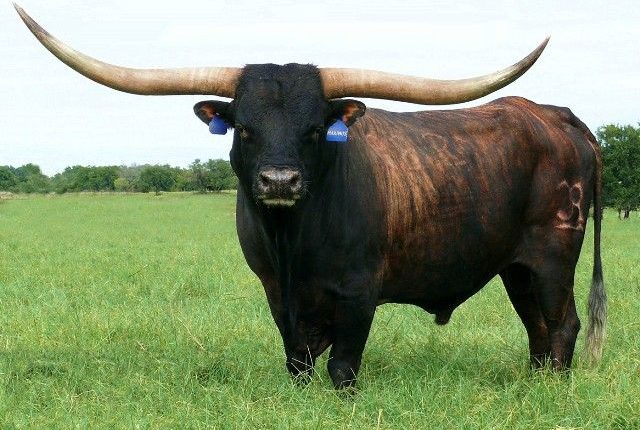Oxen launch a new career for farmer
The history of oxen is of great interest to Juniata County’s Doug Drewes. And, it turns out, he is not the only one to find it entertaining.
Drewes, a former bison and Hereford cattle farmer, regularly travels with 6,000 pounds of oxen across the state of Pennsylvania to educate people about the animal at fairs and other events.
“It started as a hobby, almost a dare,” Drewes said about his decision seven years ago.
While visiting an antique show in Centre County, he came across an older gentleman who was demonstrating with two oxen, sharing the history of the animal.
“He was just a little guy standing next to them,” Drewes said about the man, Abe Alebach of Centre County. “I was like a 13-year-old kid, asking all kinds of questions.”
After a lengthy discussion and Drewes revealing his experience with cattle, Alebach invited him to visit his farm.
Alebach began helping Drewes start his own program with oxen, and suggested he head to Lebanon County to buy two calves.
Drewes realized that the average person is unfamiliar with the definition of an ox. The most common question he receives is people asking him if he breeds oxen.
“They are a bovine which is castrated and trained to work,” Drewes said. He said few people realize an ox is always castrated male cattle.
Drewes works with Brown Swiss and Holstein breeds.
“(These breeds) are very forgiving. The downfall with the (Brown) Swiss is that they are very slow,” he said.
Drewes started working with the animals at two days old, bottle feeding them and getting them acclimated to him.
Drewes’ two oxen, Yule and Lee, made their first public appearance at the 100th anniversary of the Pennsylvania Farm Show a few years ago. As part of a parade of the state’s history of farming, Drewes and his two oxen opened the show.
“That day was the launch of the educational career,” he said, because afterwards, viewers couldn’t stop asking him questions.
“I really enjoy the history of the ox,” Drewes said, and that has become the focus of every appearance he does with Yule and Lee.
Drewes said oxen are mentioned in the Bible 26 times, for example.
But it is the American history and the bovine that intrigues people the most.
“They dragged logs out in the early days of the Northeast. They were slow and methodical. They are considered a draft animal, but slower,” Drewes said.
The analogy of the ox is that they are the “poor man’s horse,” from early America days when settlers were trying to get their homes built and start some farming.
Oxen are typically trained until they are at least 4 years old, before they are used for working jobs.
“If you worked them too young, there was damage to their bone structure,” Drewes said.
Drewes also said it was the job of children in the early days to train the oxen, which weighed thousands of pounds. The father would then take the oxen to the field when they were trained.
Drewes’ two trained oxen each weigh 3,200 pounds. They are 6 feet, 3 inches tall, at the hip.
“I had asked Abe in the beginning, how much do you feed them?” Drewes said, adding that Abe never gave a concrete answer. He would make Drewes think.
Finally, Abe told Drewes, “When they are full, they will stop.”
And, Drewes said, it’s true. When the animal has enough, he backs away. He does not just eat and eat continuously.
Drewes has two additional oxen on his farm besides Yule and Lee that he is currently training, and he also has two yearlings on his farm. He still has some Hereford cattle and chickens on the farm as well.
Yule and Lee are laid back, friendly animals who are not normally aggressive.
Another common question Drewes gets asked is whether all oxen are as approachable as Yule and Lee.
“The answer is no,” Drewes said, “Most of them want to kill you.”
The key to keeping the animal peaceful is to start working with them immediately after birth. Drewes started with Yule and Lee at two days old, and began putting them in scenarios to desensitize them. As newborns, Drewes allowed the calves to be embraced by people in his family so they would get used to the presence of humans in their face. He would wave plastic bags near them so that they would not fear such objects blowing in the wind nor react with terror and frantic movements.
The training process is continual as the oxen learn Drewes’ voice and respond to his commands. Drewes has a whip to direct them.
“I do not whip them,” he said.
If one of the oxen tips his horn toward a person in a defensive reaction, Drewes puts up his hand and sternly says “No!”
The oxen returns to his normal position.
“He knows I’m his security blanket,” Drewes said. The oxen are trained to stay perfectly in one spot because Drewes commanded them to stay. He is able to walk several yards away and return with Yule and Lee still standing at attention.
The oxen are also popular with women, he said, because females tend to be gentle when they approach the animals and enjoy just oohing and ahhing over them. Drewes often warns young men not to approach the oxen aggressively. Men have a tendency to try to roughly handle the oxen or grab their horns.
“That approach will just make them want to fight,” he said.
“Ninety percent of what I do with them is education. The shows I do really aren’t so much about entertainment, but living history,” Drewes said.
He gives commands at the shows and the oxen obey. The animals then receive praise from Drewes.
He then explains why these massive animals can be docile.
“I use a lot of psychology with these guys,” Drewes said, “It is so cool that I get to train them.”
SEEDS by materials LancasterFarming
Головні новини Seeds та агроідеї для зростання вашого бізнесу в Telegram Facebook InstagramYoutube та Підписуйтесь!



